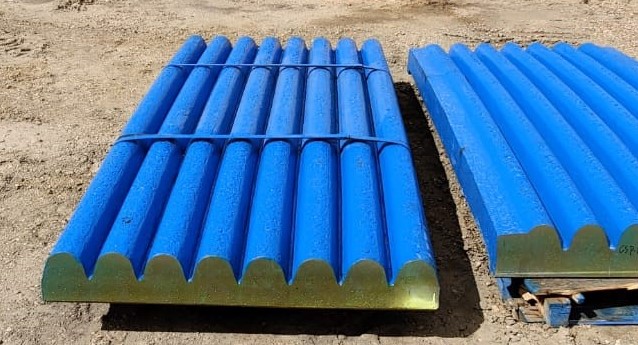How To Choose A Jaw Crusher

It is likely that you are a veteran in the sand, rock and gravel industry. This means you know that there are many types of crushers. The kind of crusher you'll need whether it's jaw, cone impact, or gyratory will be determined by the location you are working and the type of product you're making.
The crusher's specific capabilities and design will determine how it will fit in your process operations. That is, you might also have several type of crushers located in primary, secondary and Tertiary stations within the form of a circuit to perform the material reduction process. Each type of crusher liners has its own advantages and strengths in the procedure.
This article will concentrate on compression-style jaw crushing machines which are employed most frequently in the primary stage. Cone crushers are sometimes used in their place. We'll also discuss the reasons why cone crushers may be preferred over jaw crushers.
What is Jaw Crusher?
Jaw crushers are sometimes also known as "rock breakers," that refers to their force of brute force. They are almost exclusively employed as primary crushers due to their capability at breaking up some of the hardest and most massive materials into more manageable pieces that can be further reduced through various crushing equipment. Jaw crushers provide many advantages which include:
The ability to handle a variety of kinds of materials ranging from hard granite to recycled asphalt pavement (RAP) and many more, without showing as much wear and tear as primary impact crushers.
Usually, the output is minimal fine material and dust.
The environment friendly primary gyratory crusher is superior to secondary gyratory crushing.
Due to their small physical size They are ideal for small areas, like underground mining and mobile crushing in which other primary crushing options do not work.
What are the different Types of Jaw Crushers?
Jaw crushers are an old-fashioned crusher that has been in use for more than 200 years. Jaw crushers have undergone numerous technological advances over the decades. They are today more durable, simpler to move, and less likely to choke. Through these design improvements the crusher has been developed that is simple enough to remain in use.
Nowadays, two jaw crusher configurations are available from major equipment manufacturers. They differ in the main on the way that the jaws move, although their output is comparable.
Double Toggle--Blake Type or Overhead Pivot Motion
Double toggle jaw crushers with double toggle motions like the Blake style, named in honor of Eli Whitney Blake, who invented the first jaw crusher made of mechanical that was efficient and is renowned for crushing abrasive, hard and hard stones, as well as sticky feeds. Jaw crushers with this design have high energy-efficiency. The overhead pivot design decreases wear on crusher faces by a lot greater than Blake design.
Single Toggle - Overhead Eccentric Motion
Compacter than double toggle designs the single toggle jaw crusher was initially unable to take delivery of such large feed sizes, but it can generally run more quickly. The machines are now renowned for their efficiency and speed because of technological advancements. They are subject to more wear and tear than double toggle type crushers however , wear parts are readily available and economical.
What is a Jaw Crusher? Function?
While jaw crushers function in various ways however the basic working principles are similar. Jaw crushers are able to reduce the size of rocks, ore, and other materials using a compression action. Fixed jaws, placed in a V-shaped alignment is the stationary breaking surface, while a moveable "swing" jaw exerts force on the feed material by pressing it against the plate that is stationary.
The bottom area of the jaw plates aligned in V-shape is known as the output gap that dictates the size of the crushed product from the jaw crusher. The crushed rock stays in the jaws until it is smaller enough to fit through the gap.
Which is more efficient: Jaw or Cone Crushers?
While jaw crushers are likely to be a smart mill liners foundry stage preference for many tasks but it's also true that more recent cone crushers are being used in their place due to their versatility. Both cone crushers and jaw crushers work by compressing materials that reduce their size through squeezing until they break into pieces.
The advantage that cone crushers provide over jaw crushers is their capacity to produce a more cubical product similar to impact crushers. Cone crushers were traditionally utilized as secondary and from time to time third-party crushing stations.
In determining whether or not one kind of crusher is superior to the other, context is essential. It all comes down to your production goals and demands.